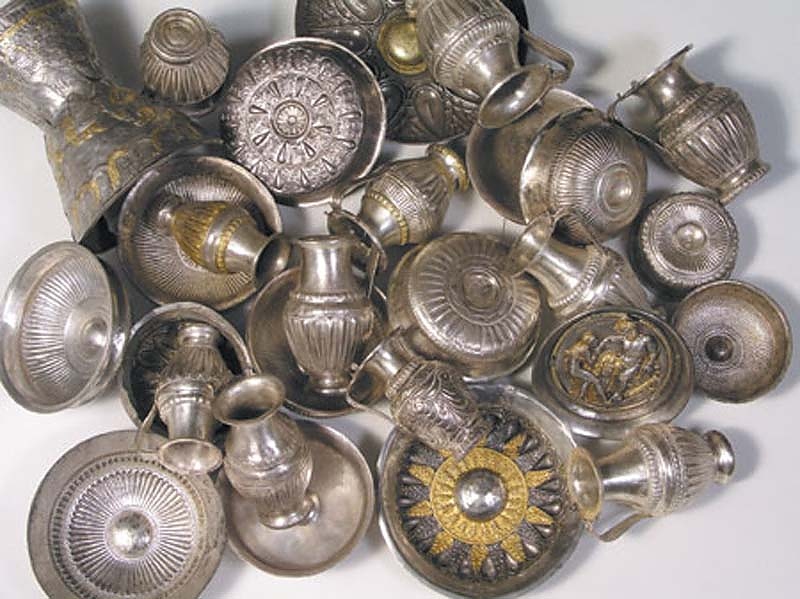This treasure was discovered accidentally in the autumn of 1985 in Rogozen village, Vratsa region. The overall number of the vessels amounted to 165 (1 golden and 164 silver vessles), something unobserved to this day. It turned out that the treasure was weighing 20 kg (108 shallow dishes - vials, 54 decanters and 3 ordinary cups). It became clear the find could be attributed to the ancient Thracian period (the middle of 4th c. BC) and it belonged to some local Thracian nobles. The vessels have been collected for a long time and represented a family treasure, handed down from generation to generation. They must have been buried into the ground at the time of dangers. Such dangers appeared during the time of the marches of the Macedonian kings Philip II (359-336 BC) and Alexander the Great (336-323 BC). The great value of the vessels is not in the precious metals but in their unique decorations. In them we can see various motifs – elements of plants, animals, mythological scenes, images of Thracian Great Goddess. On several of the vessels there are inscriptions containing Thracian personal names and settlements. This is the reason why the Rogozen Treasure is of exceptional importance as a monument of Thracian history and culture. Its artistic and technical knowledge has left a lasting and deep trace in the applied crafts. This treasure still remains a unique monument of ancient art in our lands. It can be seen in Vratsa History Museum.
|


